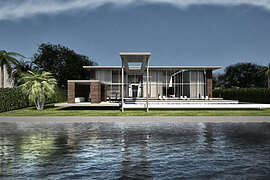Gogo Graham – Famous queer Fashion Designers everyone should know about
In the dynamic landscape of fashion, Gogo Graham emerges as a pioneering force, reshaping the narrative of queer fashion with her distinctive approach. This article delves into the life and creative endeavors of Gogo Graham, a renowned queer fashion designer, exploring the architectural nuances that define her work and contribute to the evolution of design, construction, and architecture within the fashion industry.
Early Career and Design Philosophy
From New York to the Forefront of Queer Fashion
Gogo Graham, born on February 12, 1988, in Atlanta, Georgia, embarked on her fashion journey in the vibrant city of New York. Early in her career, Graham distinguished herself by merging architectural concepts with avant-garde fashion, establishing a unique design philosophy that challenges conventional norms.
The Interplay of Architecture and Fashion
Graham’s educational background in architecture profoundly influenced her design approach. She seamlessly integrates architectural principles into her creations, exploring the symbiotic relationship between form, structure, and the human body. This innovative approach sets her apart as a trailblazer in the intersection of fashion and architecture.
Architectural Elements in Fashion
Exploring Form and Structure
Gogo Graham’s designs are characterized by a meticulous exploration of form and structure. Her garments transcend mere clothing, embodying wearable sculptures that draw inspiration from architectural aesthetics. Graham’s ability to seamlessly blend the principles of architecture with fashion results in avant-garde pieces that challenge traditional design boundaries.
Embracing Diversity in Materials
An essential aspect of Graham’s architectural influence is her diverse choice of materials. From unconventional textiles to repurposed fabrics, each material is strategically selected to contribute to the overall architectural narrative of her designs. This material experimentation mirrors the architectural practice of seeking innovative solutions for construction.
Queer Identity and Fashion Innovation
A Queer Pioneer in Fashion
As an openly transgender designer, Gogo Graham has become a beacon of representation within the fashion industry. Her work not only celebrates her queer identity but also serves as a catalyst for broader discussions on inclusivity and diversity within the fashion landscape. Graham’s designs transcend traditional gender norms, reinforcing her commitment to reshaping the narrative of queer fashion.
Redefining Beauty Standards
Graham’s designs challenge conventional beauty standards, fostering a more inclusive and expansive definition of beauty. By featuring models from diverse backgrounds and identities, she actively contributes to a paradigm shift in the industry. This commitment aligns with the architectural ethos of creating spaces that are welcoming and reflective of diverse communities.
Signature Style and Impact on Pop Culture
Avant-Garde Expressions
Gogo Graham’s signature style is deeply rooted in avant-garde expressions that defy categorization. Her designs are not confined to trends but rather serve as artistic statements that push the boundaries of fashion. This avant-garde approach has positioned Graham as a transformative figure in pop culture, influencing the broader fashion conversation.
Cultural Impact and Celebrity Endorsements
Graham’s cultural impact extends to celebrity endorsements, with notable figures embracing her avant-garde creations. This crossover into mainstream recognition underscores the resonance of her designs beyond the queer fashion sphere, further solidifying Graham’s influence on the broader cultural landscape.
Architectural Influence in Runway Productions
Immersive Runway Experiences
Gogo Graham’s runway shows transcend conventional presentations, evolving into immersive experiences that mirror architectural installations. The careful curation of space, lighting, and choreography contributes to a cohesive narrative that underscores the fusion of fashion and architecture. These runway experiences showcase Graham’s commitment to elevating fashion into a multisensory art form.
The Spatial Dynamics of Runway Sets
Graham’s runway sets are conceived with a keen understanding of spatial dynamics. Whether it’s the utilization of minimalist designs or intricate constructions, each runway set contributes to the overall architectural narrative of her collections. The spatial consideration reflects the architect’s approach of creating environments that engage and captivate the audience.

















